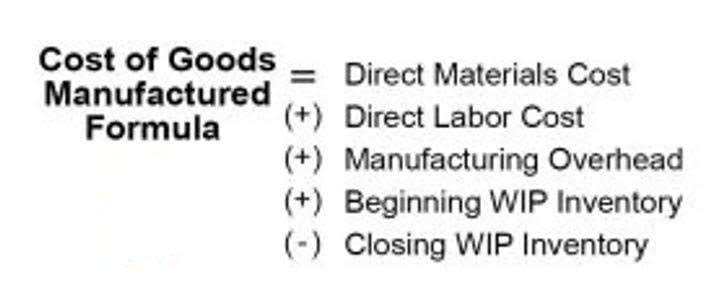
Unappropriated retained earnings have not been earmarked for anything in particular. They are generally available for distribution as dividends or reinvestment in the business. This means the company was able to generate $5 in market value for each dollar of earnings it retained. Had the company used debt capital instead, they’d have generated less value because of the interest payment; internally generated capital helps profitable companies create value more efficiently. Consistently higher dividends in the statement indicate that the company is maturing and doesn’t need capital for growth, whereas younger, high-growth companies are less likely to declare dividends.
Net Income vs Retained Earnings
- Dividends are distributions of the company’s profits to its shareholders, decreasing the retained earnings balance.
- What this finale tells us is that Widget Inc. is managing to grow its financial backbone, enhancing its ability to invest in future endeavors, or perhaps even weather economic downturns.
- Now, their collective impact crystallizes into one defining number—your ending retained earnings.
- In the next accounting cycle, the RE ending balance from the previous accounting period will now become the retained earnings beginning balance.
- The statement of retained earnings shows how your business either increased or decreased its retained earnings between accounting periods.
- Even if the company is experiencing a slowdown in business activities, it can still make use of the retained earnings to pay down its debt obligations.
- A statement of retained earnings is a financial statement that shows the changes in a company’s retained earnings balance over a specific accounting period.
It’s often an alert to investors and managers to review the company’s financial health and strategies. Retained earnings hold enormous significance for business owners and potential investors as they are a barometer of a company’s financial health and historical profitability. When a company consistently boasts positive retained earnings, it’s generally seen as a signal of a profitable company that can self-fund its growth, appealing to investors seeking stable investments. When it comes to managing your business’s finances, you can never be too organized. Financial statements help with decision making and your ability to get outside financing.
End of Period Retained Earnings

Dividends to shareholders impact shareholders’ equity as they represent a distribution of company profits. When a company pays dividends, it reduces the balance in the retained earnings account, thus decreasing the shareholders’ equity. Net income is like the heartbeat of your company’s financial health, pulsating through the veins of your statement of retained earnings. Think of Bookkeeping for Chiropractors it as the hard-earned result of your business operations—the grand total after expenses bow out of revenues’ spotlight.
Deduct dividend payments
Understanding how the statement ties together with the company’s overall financial narrative gives stakeholders a clearer view of the company’s strategy and stability. Net income and retained earnings may have distinctive differences, but both play a pivotal role in allowing financial professionals to gain a better look at their company’s finances. Let’s say your business has beginning retained earnings of $10,000 and net income of $4,000. Higher retained earnings may be a sign of a company’s financial strength as it saves up funds to expand—or it could be a missed opportunity for paying dividends. A company that doesn’t pay dividends could multiply an investor’s capital, provided things go well.


Imagine a reservoir of funds, steadily growing with each fiscal period, held back by a company for future investment, debt reduction, or as a cushion against unforeseen financial challenges. This reservoir is known as retained earnings, a pivotal component of shareholder equity that reflects a firm’s financial health and strategic understanding. While negative retained earnings can be a warning sign regarding a company’s financial health, an company’s retained earnings can also be negative for a company with a long history of profitability. It simply means that the company has paid out more to its shareholders than it has reported in profits. Retained earnings, on the other hand, represent the accumulated net income over multiple accounting periods that have not been paid out as dividends.
- The surplus can be distributed to the company’s shareholders according to the number of shares they own in the company.
- By understanding and effectively managing retained earnings, businesses can reinvest in growth opportunities, pay down debt, and improve overall financial stability.
- Think of it as the hard-earned result of your business operations—the grand total after expenses bow out of revenues’ spotlight.
- ” or not is a significant decision — one that can change the entire narrative of your business’s financial storyline.
The Relationship Between Net Income and Retained Earnings

Retained earnings represent a useful link between the QuickBooks income statement and the balance sheet, as they are recorded under shareholders’ equity, which connects the two statements. The purpose of retaining these earnings can be varied and includes buying new equipment and machines, spending on research and development, or other activities that could potentially generate growth for the company. This reinvestment into the company aims to achieve even more earnings in the future.
- The statement of retained earnings is a crucial financial document that tracks the cumulative earnings retained by a company over time.
- Lenders are interested in knowing the company’s ability to honor its debt obligations in the future.
- The statement of retained earnings—what we’re focusing on today—tells you how much of the current year’s earnings were distributed as dividends and reinvested into the business.
- It’s the dance of digits that ultimately reveals the health and direction of a business.
- The first figure on a statement of retained earnings is last year’s ending retained earnings balance.
Open with the balance from the previous year
- Below is a short video explanation to help you understand the importance of retained earnings from an accounting perspective.
- Dividends to shareholders impact shareholders’ equity as they represent a distribution of company profits.
- Corporations often use the Income Statement instead of a dedicated Statement of Retained Earnings.
- This statement can signal either growth potential or a warning bell of upcoming financial troubles, making it a crucial document for investors, shareholders, and directors alike.
- It reassures shareholders about the company’s health, aligns them with management’s vision, and often, keeps them invested for the long haul.
Absolutely, retained earnings can be distributed among shareholders in the form of dividends. This payout is at the discretion of the company’s management and board of directors. Revenue is the total income earned from sales before expenses, while retained earnings the statement of retained earnings reports: are the profits left after all expenses and dividends are deducted. By effectively communicating the strategy behind retained earnings, the company fosters transparency and trust. This isn’t just accounting; it’s strategic communication that reinforces shareholder confidence and underscores the company’s potential. While the calculation itself is straightforward, the thought process behind how much to retain versus distribute in dividends reflects a company’s long-term strategic planning and fiscal discipline.
